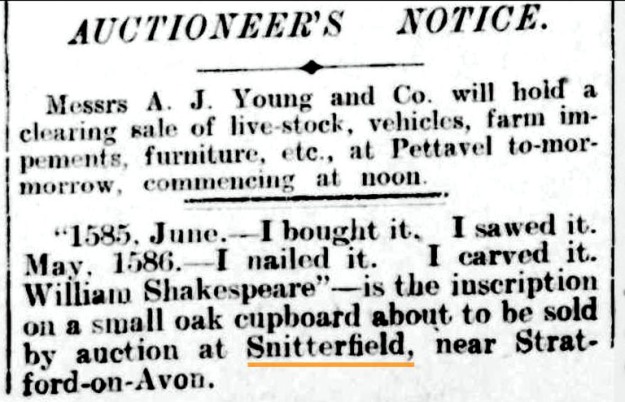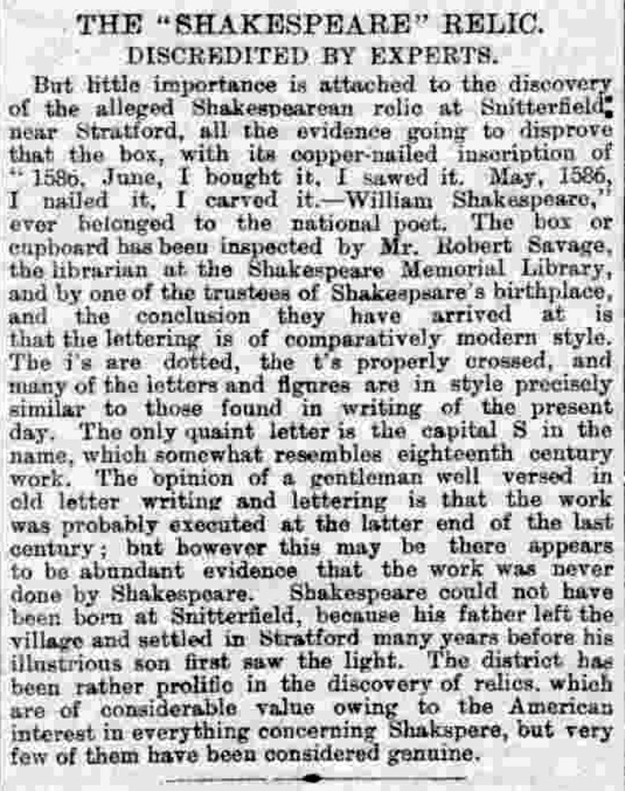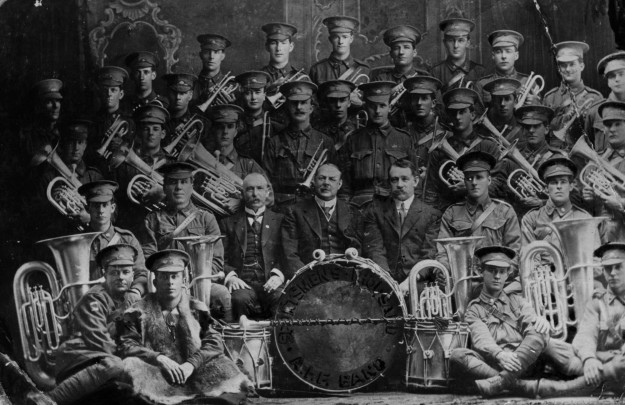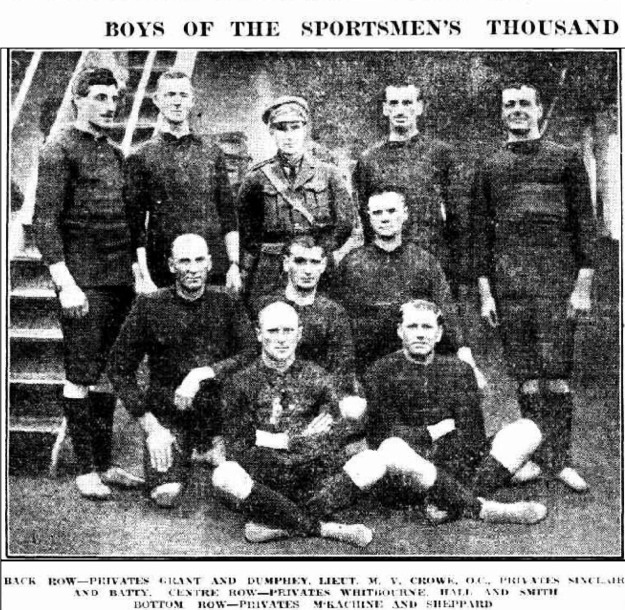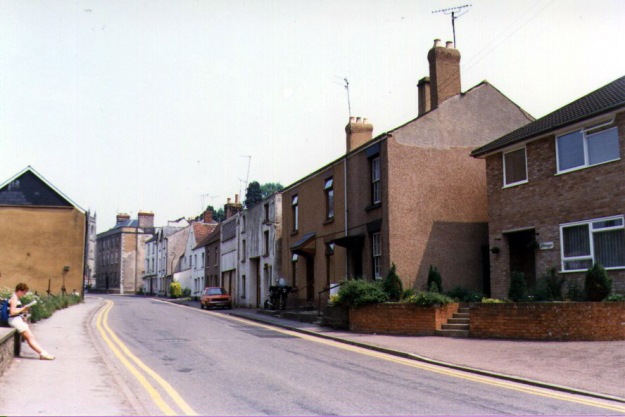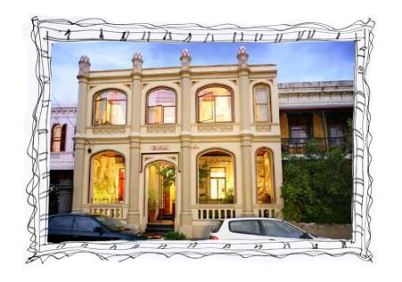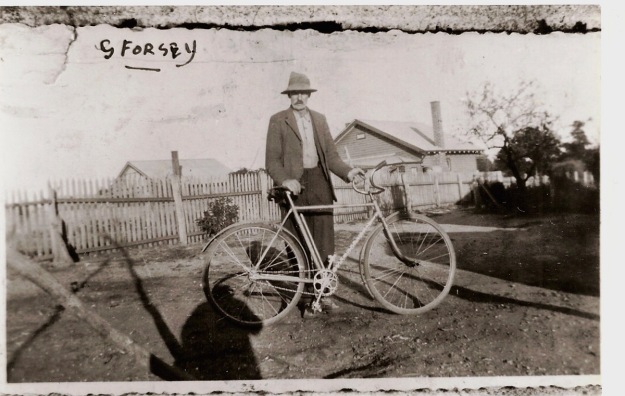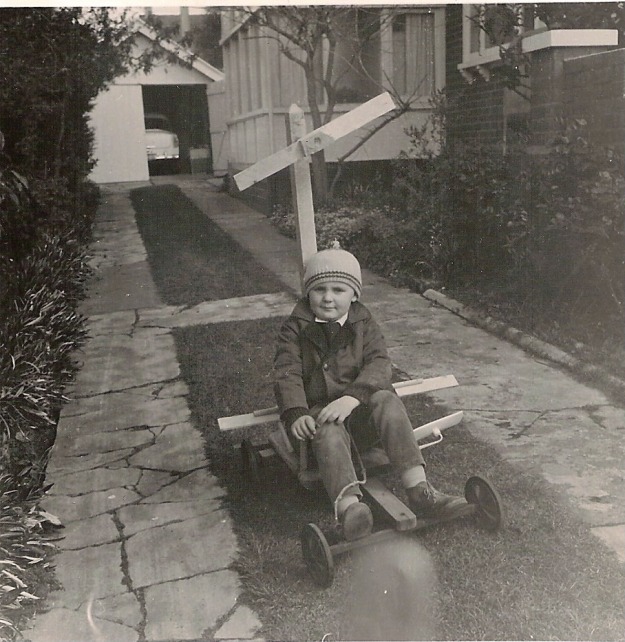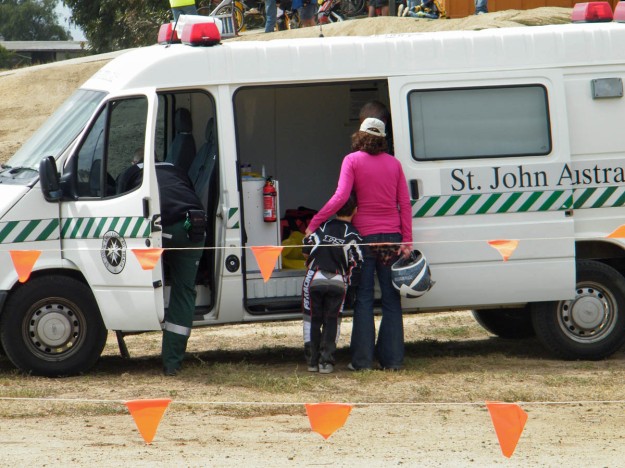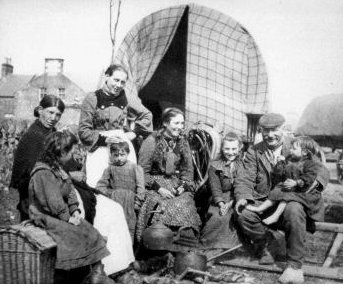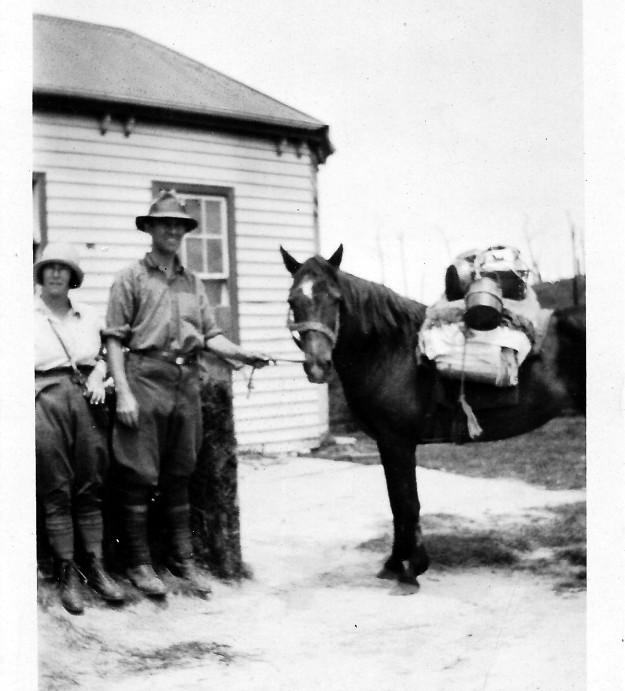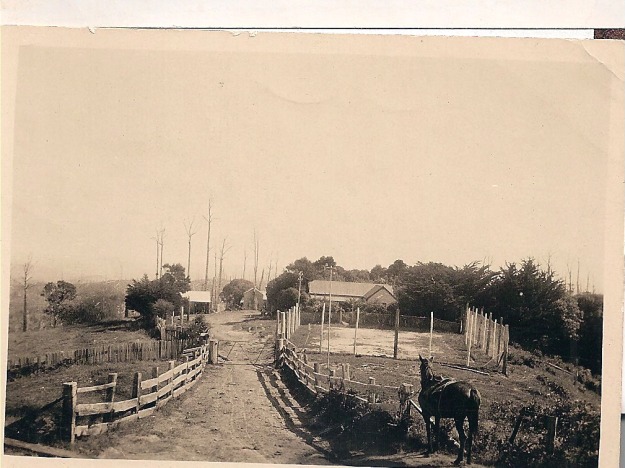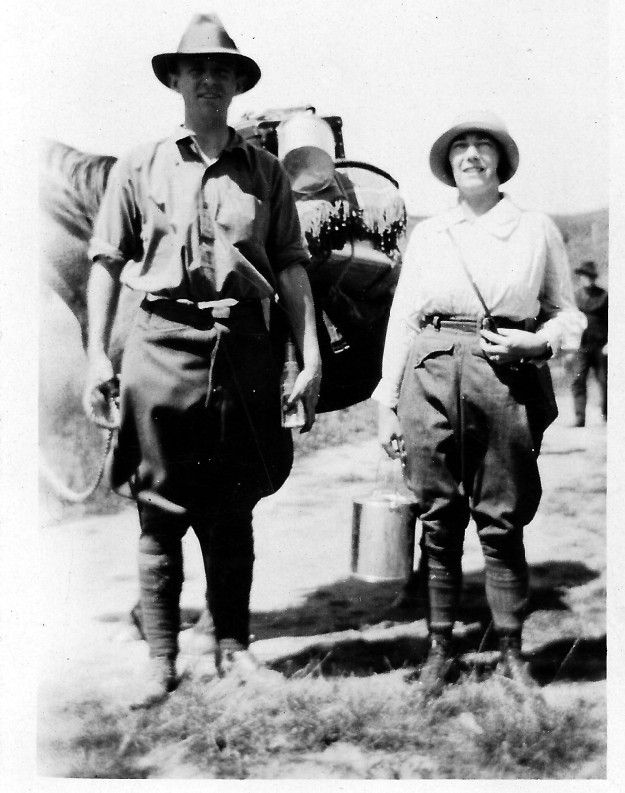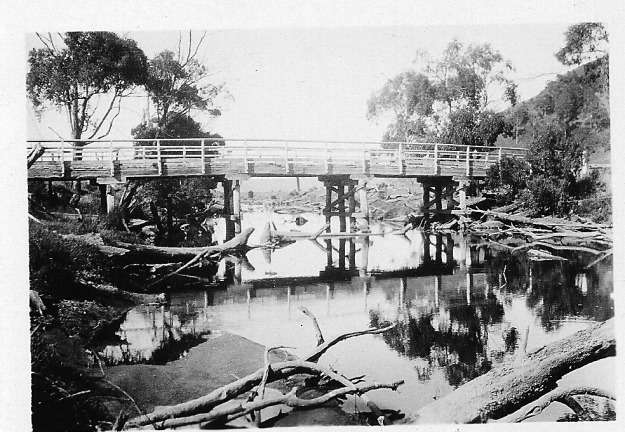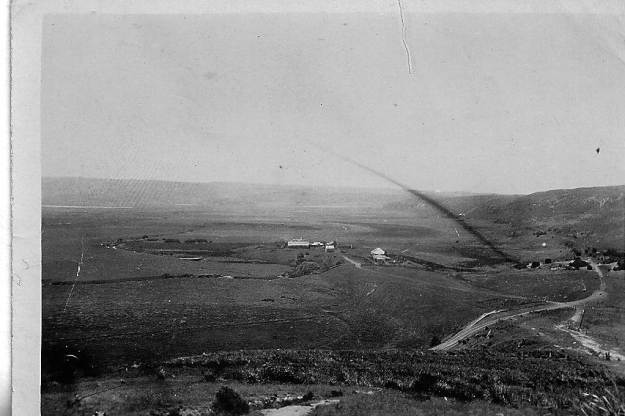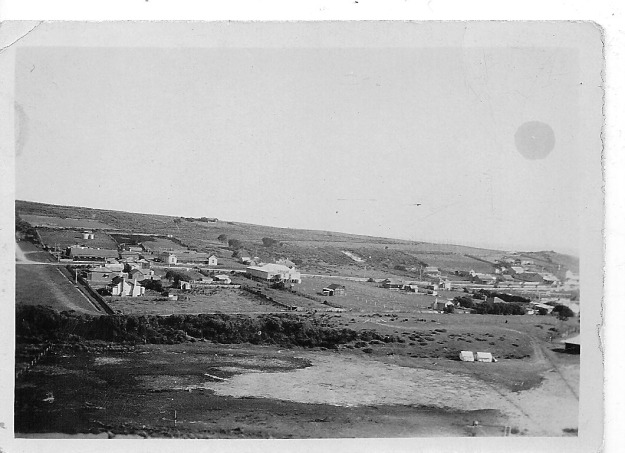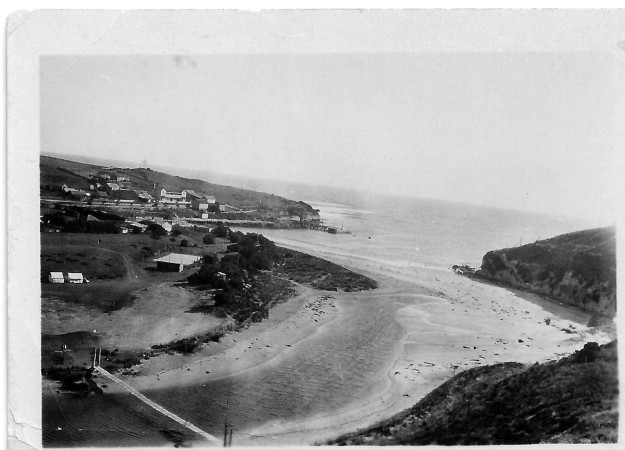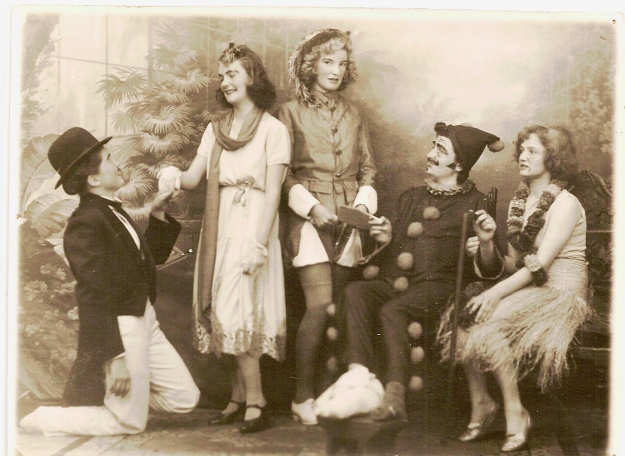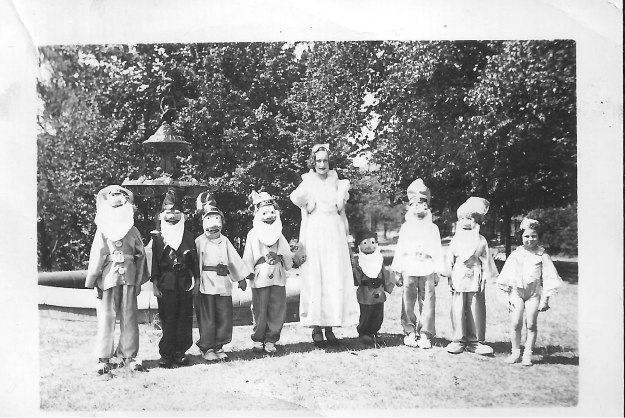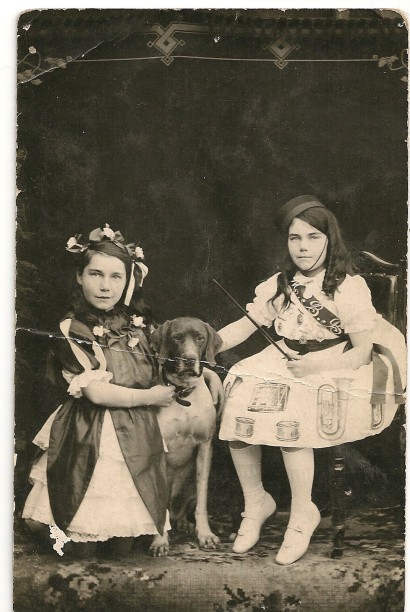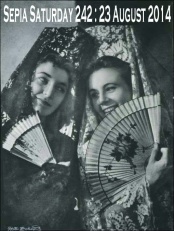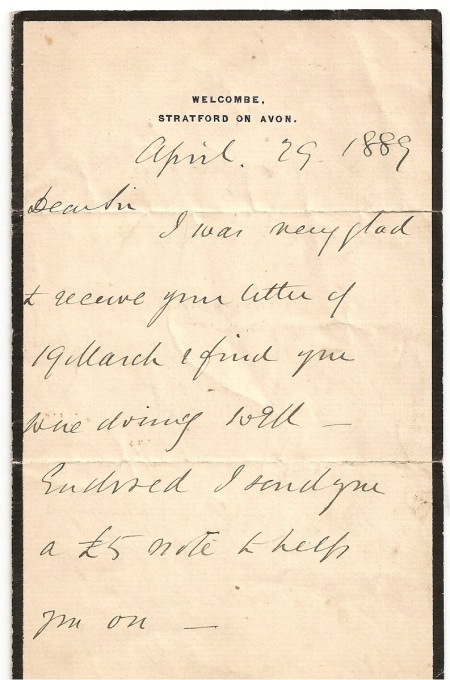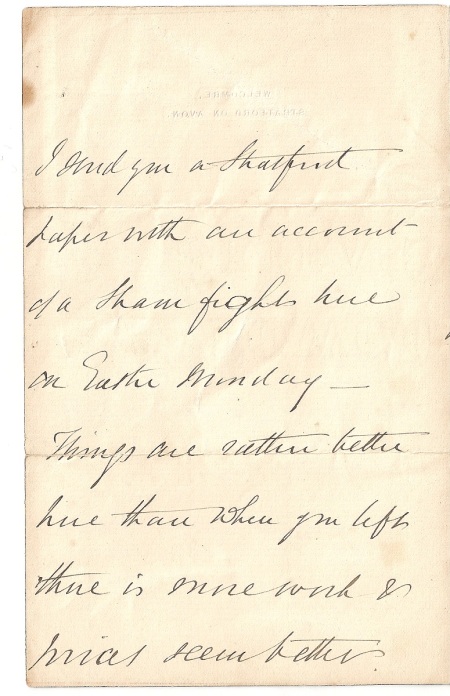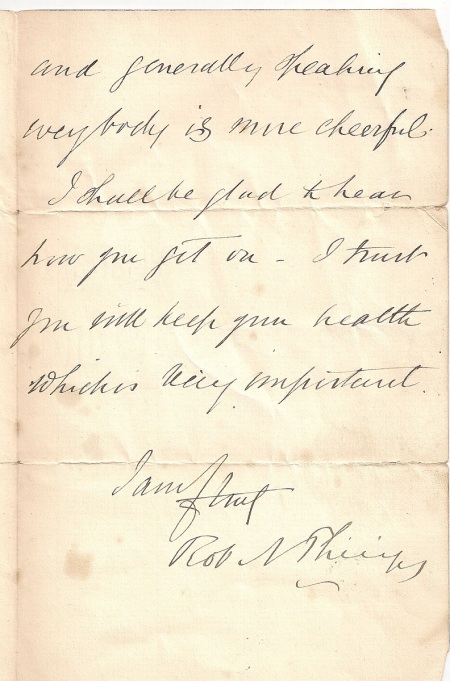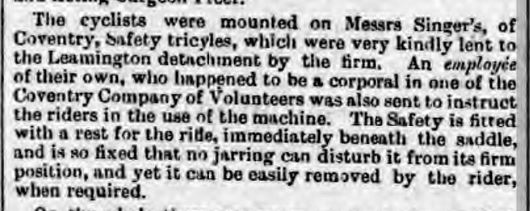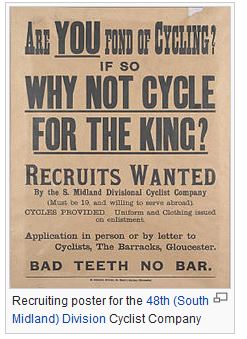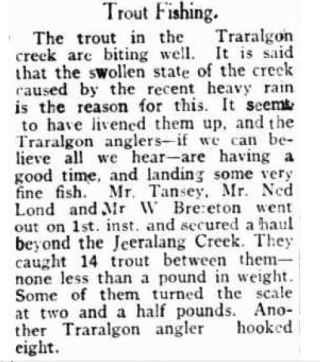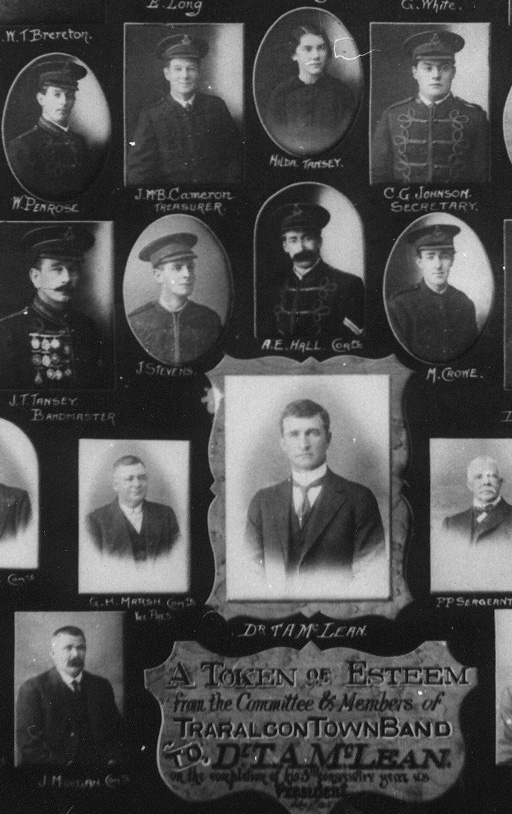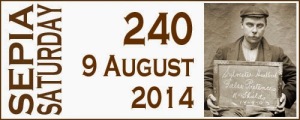My father’s Uncle Albert was born in Carisbrook in Central Victoria. I have long known he had married a pretty young woman, Isadora Levy, who always wore beautiful Edwardian clothes in her photos.
This week Sepia Saturday has shown us a photo of a man carrying a woman across a stream.
So take that fact of a man carrying a woman and imagine Albert carrying his new bride over the threshold of their marital home. That’s my connection to this week’s theme and an excuse for having a look at Uncle Albert’s choice of a bride.

It wasn’t until Trove and its digitized newspapers revealed an account of the wedding that a little story began to evolve.
Albert Fricke was descended from a Protestant German family whereas Dora, as she was known, was the daughter of a prominent Melbourne Jewish businessman, Joseph Levy. As I understand it a non-Jew cannot have a Jewish wedding and I find it hard to believe that a girl brought up in the Jewish faith would agree to be married in front of a Christian cross. So the compromise was what I assume was a civil wedding, at home, by Mr Tracy, the Registrar-General .
The Australasian of June 4th, 1898 reported …..
The marriage of Mr. F. T. Albert Fricke, East Melbourne, and Miss Isadora Eugenie Levy, youngest daughter of the late Mr. Joseph Levy, 50 George St, Fitzroy, took place in the drawingroom at Brooklyn, on Wednesday, April 27, by the Registrar General. The bride was given away by her mother, and was in white satin, with long square train. A cascade of Honiton lace fell from waist to foot on one side of the skirt front. The corsage was Russian blouse shaped, and had a yoke of pearl passementerie, while the front below was composed of rows of ribbon, alternated with pearl trimming; the back was treated in a similar fashion, but without the pearl trimming. The rucked sleeve had a row of passementerie from wrist to shoulder, and a tabbed Medici collar, softened by Honiton lace; veil arranged over a coronet spray of orange blossom; shower posy, and diamond bird and butterfly brooch (gift of the bride groom).
Corsage = bodice of dress
Passementerie = an ornamental edging or trimming made of braid, cord, beading etc.

The report continues …..
Miss Beatrice Levy, sister of the bride) was bridesmaid, and wore yellow silk with overskirt of fine figured net, with a design of graduated satin bands round the bottom. The Russian corsage was of yellow brocade, with vest of alternate tucks of brocade and striped armure silk, with cascade of lace down the left side. The waist belt was fastened With a pansy buckle, and the sleeves were of armure striped silk: picture hat, shower posy, and a gold shepherd’s crook and bell, -with initials of the bride and bridegroom {gift of the latter). The bridegroom was supported by his father, and Mr. J. Raphael acted as groomsman. At the conclusion of the ceremony breakfast was served and a reception held by the bride’s mother. Wedding tea and light refreshments were served in the dining-room. The travelling dress was of peacock blue cloth. The presents included:-The bridegroom to bride, diamond bird and butterfly brooch; bride to bridegroom, sapphire and pearl sleeve-links; mother of bride, cheque, drawing and dining room suites, and piano; father pf bridegroom, cheque; mother of bridegroom, over mantel and mantel drape; Miss B. Levy (sister of bride), tea service and point lace handkerchief.
Armure = a woollen or silk fabric woven with a small, raised pattern.
It is interesting to note that the bridegroom was “supported by his father”. These days we might call that position “the best man” but I was wondering if they were incorporating a little bit of Jewish tradition where often the groom was led under the chuppah by the two fathers and the bride by the two mothers. I had trouble envisaging this German immigrant who worked a small farm being transported into a Melbourne drawing room. There is a strong possibility that this is a photo of Freidrich Fricke. The photo belonged to his daughter and was taken by the same photographer as used by other family members.
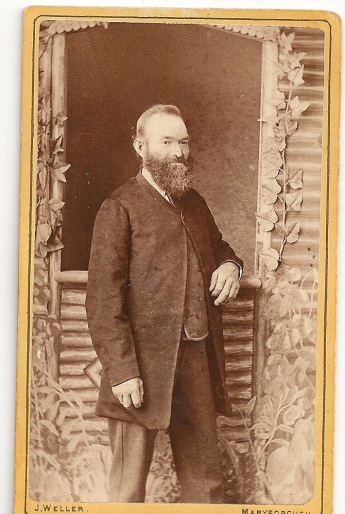
We are told the wedding took place at the home of the bride’s mother ( her father had died the previous year). The home was ”Brooklyn” in Fitzroy . It is now a hotel.
We know a little bit more about this Jewish family where Albert found his wife because on the year that Isadore was born, 1875, her father built Ensor House at 172 Victoria St, East Melbourne and this is where she spent her early years. They left there in 1878.
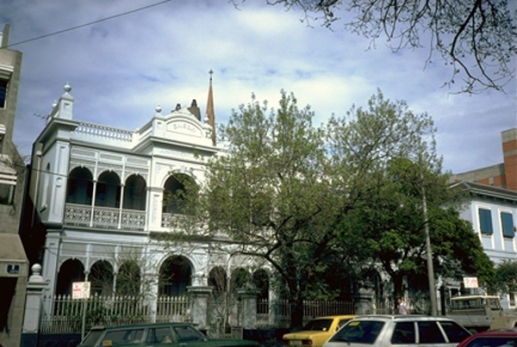
Levy sold Ensor to Benjamin Fink, a Victorian member of parliament, in 1878. Fink was also notorious as a land speculator in the 1880s in Melbourne until he went bust in 1892 and fled the country. Strangely much had been transferred to his wife’s name. But for any Melbournians wanting to know what Fink owned in Melbourne see here. You will be surprised. Ensor later became a private hospital, in 1907 it became a boarding house and as far as I know is now the Victorian Eye and Ear Hospital Nurses` Home.
I have since found a more detailed report of the wedding in Table Talk and apart from listing which of Albert’s siblings were present it also says that the wedding was conducted “quietly” and that it was a morning wedding. Eight months later Dora’s older sister Beatrice was to marry, but this time the wedding was at the Synagogue in Bourke St.
More carrying, over land and water, in the links of this weeks’ Sepia Saturday.

